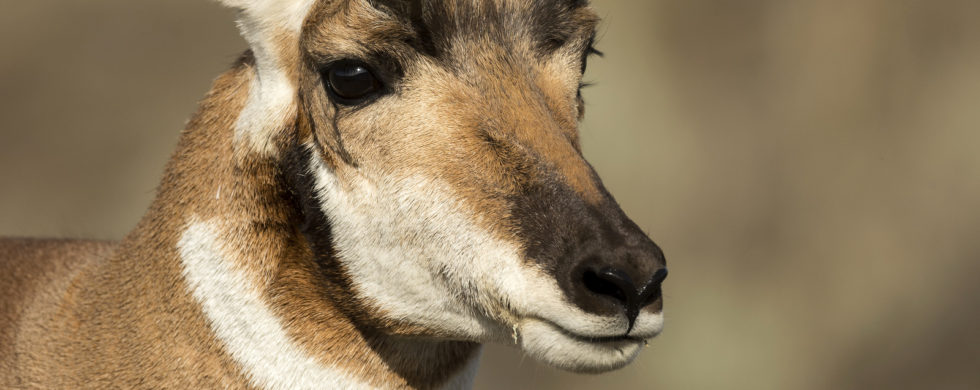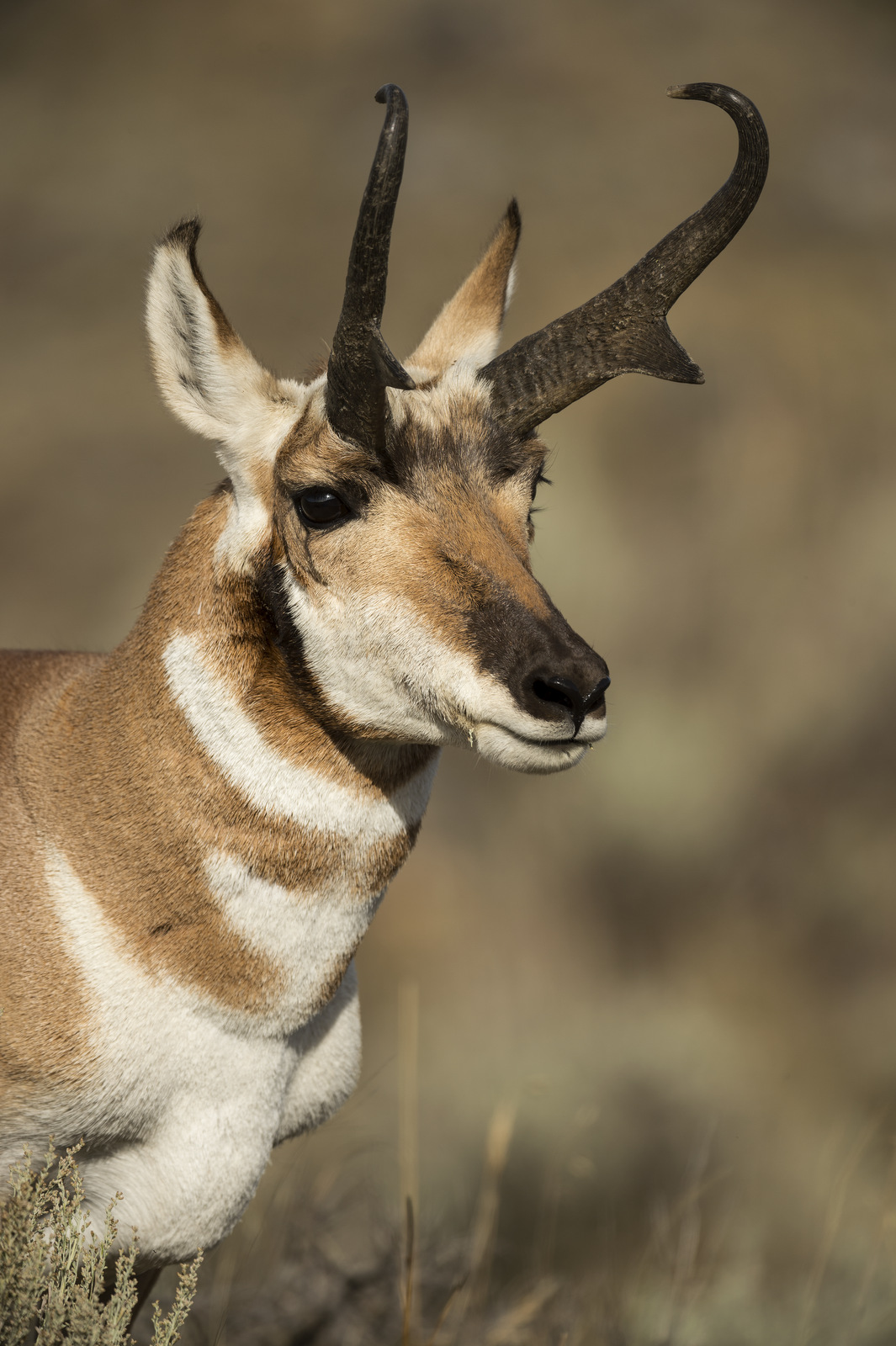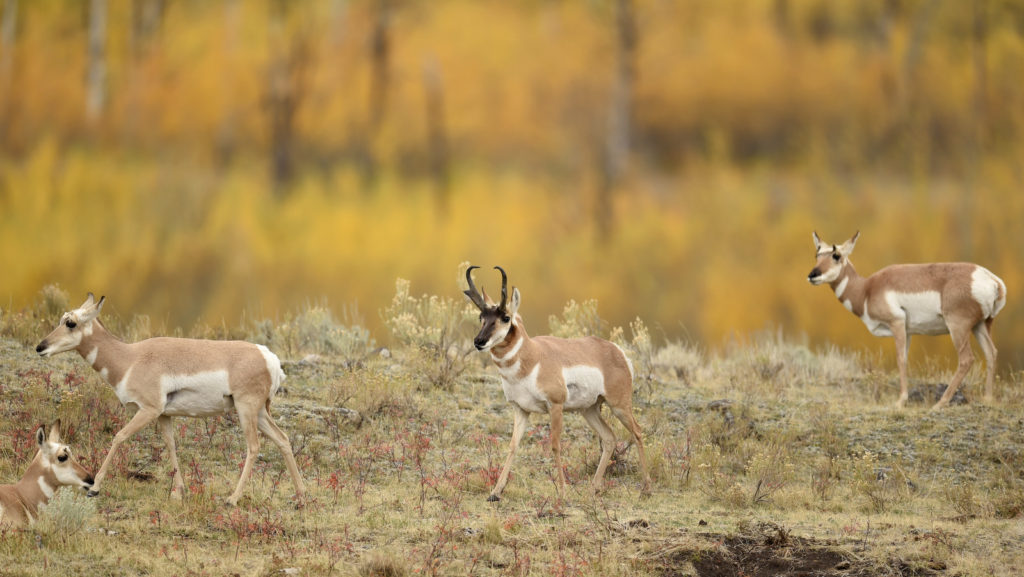
28
2018Antlarchy
Shot of the Month – February 2018
 Despite living in a herd, the Pronghorn is really not prone to following the crowd. For example this ungulate (hoofed animal) looks like an antelope, but it is not. They are related to goats and antelope but actually belong to the family Antilocapridaea — they are the only members of this family.
Despite living in a herd, the Pronghorn is really not prone to following the crowd. For example this ungulate (hoofed animal) looks like an antelope, but it is not. They are related to goats and antelope but actually belong to the family Antilocapridaea — they are the only members of this family.
Pronghorn are named after their namesake antlers. Or are they horns? Following their rule breaking tendencies, they are both, and neither. I have a hard time keeping track of the difference between antlers and horns in the best of times, so let’s break it down:
Antlers
Antlers are made of pure bone tissue and are shed and regrown annually. Typically antlers only grow on the males of the Cervidae family and include all species of deer, moose, and elk. Caribou are the exception in that the female caribou also grow antlers.
Horns
Horns have a bony core which is covered with a sheath of keratin, the same stuff that makes up hair and fingernails. Horns are found on members of the Bovidae family which includes a diverse crowd — cows, sheep, goats, water buffalo, antelopes and gazelles. Horns can appear on both male and female. Unlike antlers, horns are never branched, and never shed, and in many species, never stop growing. (source)
So the pointy things on the head of the Pronghorn take on characteristics of both horns and antlers:
— They have two points or “prongs” which makes them like an antler. True horns only have one point.
— They have a layer of keratin like true horns, but they shed the horns each year, as if they were antlers.
— Female Pronghorn also have pointy things on their heads, though smaller. Antlers only grow on the males, usually. Horns can be found on both.
Sooo, I guess they have “Hantlers?” “Horntlers”? “Antlorns”?
These nonconformists are wreaking havoc with our science books and making life tough for biology students.
And I didn’t even delve into rhino horns — yes they are similar but not quite the same. And giraffe horns – again a bit different…but time to end before we fall into “antlarchy.” (See what I did there?)
Until next month….
Nikon D4S, Nikon 600mm f/5.6, 1/800s, ISO 125

